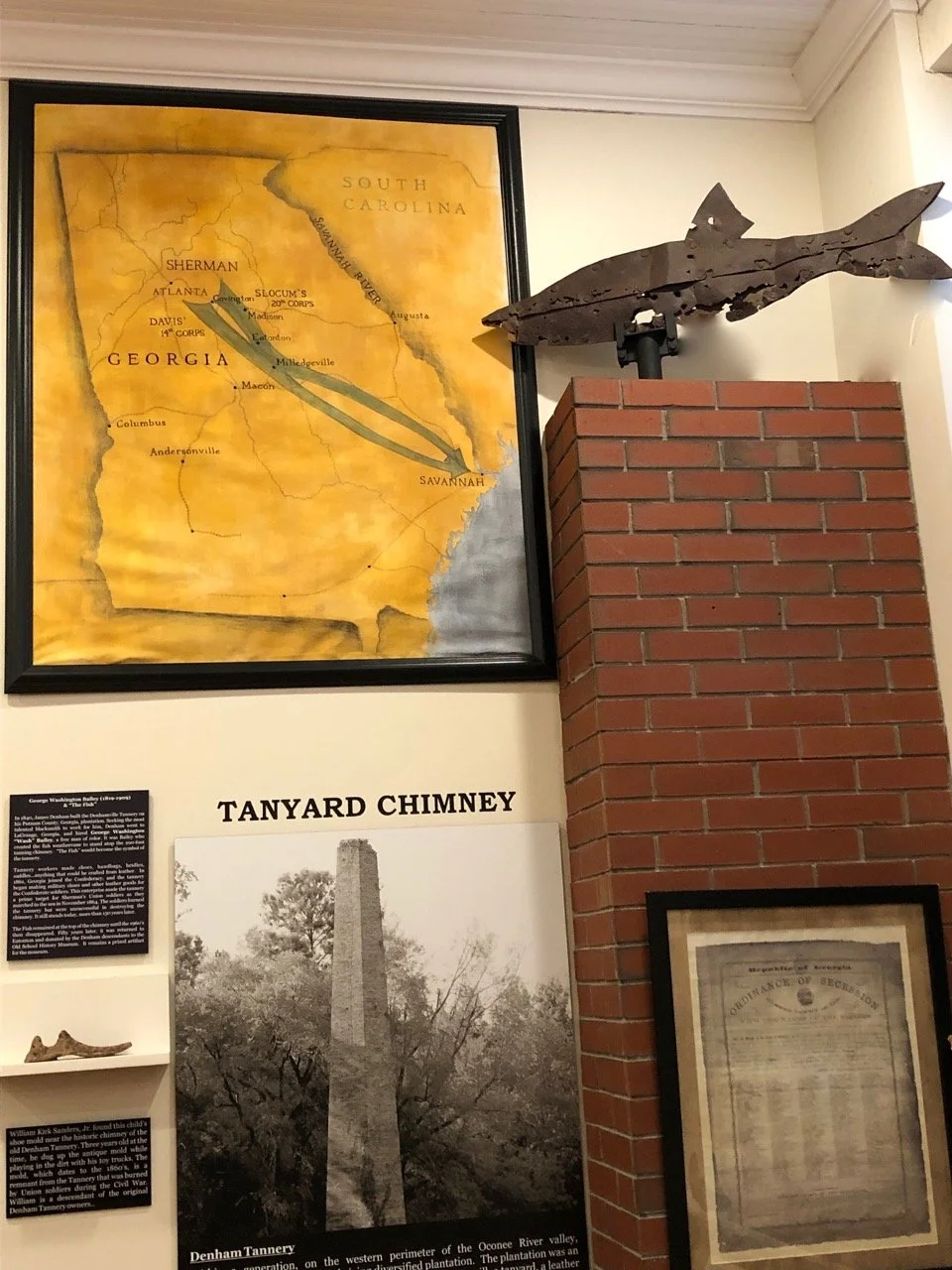If you ask the Old School History Museum docents to talk about their favorite museum artifacts, you will likely get a different answer from each one of us. So we decided to give our team a chance to share and explain their choices in our 2022 eNewsletters. To start the series, our director, Sandra Rosseter, shared the following story:
I cherish so many of our museum artifacts, but the Fish weathervane has a special place in my heart! When The Plaza Arts Center was still a restoration dream on an architectural drawing, we knew the old Eatonton School would also house a museum to tell the rich history of Eatonton/Putnam County. It was important that the museum committee began collecting items and artifacts to exhibit. One day, a committee member, Carolyn “Sug” Walton, called me with great excitement in her voice. “Sandra, the “Fish” is coming home, and we will have it in the museum!”
I knew that the Fish had disappeared decades before, so I was also excited. Sug, who married into the Denham family, told me that a Denham descendant had called to tell her that the Fish had been mounted over his fireplace in Texas for many years. As a teenager in the 60’s, he had found it lying on the ground beside the chimney and kept it as a family treasure. When he learned that a museum would be part of the old school he had attended, he wanted the Fish to be in that museum!
But why all the excitement about a Fish weathervane?
Let’s step back in time…
In 1840, James Denham built the Denhamville Tannery on his Putnam County, Georgia, plantation. Seeking the most talented blacksmith to work for him, Denham went to LaGrange, Georgia, and brought back George Washington “Wash” Bailey, who was known as a skillled blacksmith. It was Bailey who created the fish weathervane to stand atop the 100-foot tanning chimney. “The Fish” would become the symbol of the tannery.
Tannery workers made shoes, handbags, bridles, saddles…anything that could be crafted from leather. In 1861, Georgia joined the Confederacy, and the tannery began making military shoes and other leather goods for the Confederate soldiers. This enterprise made the tannery a prime target for Sherman’s Union soldiers as they marched to the sea in November 1864. The soldiers burned the tannery but were unsuccessful in destroying the chimney. It still stands today, more than 180 years later.
My story, however, has another twist! Shortly after the museum opened in 2009, I was working late one Saturday afternoon after the museum had closed for the day. I had locked all the doors and was busy with some cleaning. I don’t remember my task, but I do remember that my clothes were dirty from the work.
I heard a knock on the front door, but it was after hours, my clothes were dirty, and I decided to ignore it. However, the knocking grew more insistent, and I gave in and went to answer it. Three people stood there: a woman I guessed about my age, a younger woman, and a young man probably in his late teens – all African-Americans. I opened the door, apologized for my appearance, and asked if I could help. The older woman replied, ”Yes, we want to see the Fish!”
I ushered them back to the museum where they told me this amazing story: They were descendants of George Washington “Wash” Bailey, and they were in Eatonton for their annual Bailey family reunion, a reunion held each year in different parts of the USA. They told me that Wash Bailey was a “free man of color” and that Jim Denham had hired him away from a good job in LaGrange. Since slavery still existed in the 1840’s, local history and our museum team had wrongly thought that Wash Bailey was a slave.
I have been forever thankful that I answered the door that day to meet a lovely family and learn the true story of this outstanding artisan. I also look forward to the Bailey reunion returning to Eatonton one year and bringing more family to see their ancestor’s creation!


